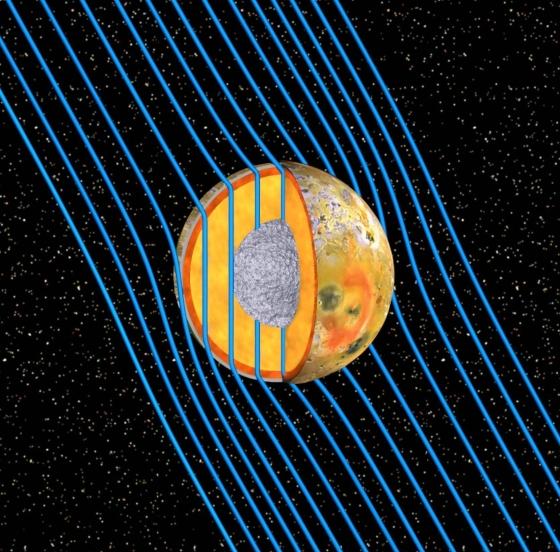We're open daily! View holiday hours
Science News
Magma Ocean & Weird Exoplanets
May 13, 2011

A Magma Ocean, Hot Jupiter Rotations and finding Earth-like exoplanets: this week’s most exciting space headlines.
A new analysis of data from NASA's Galileo spacecraft reveals that beneath the surface of Jupiter's volcanic moon Io is an “ocean” of molten or partially molten magma. The magma ocean layer appears to be more than 30 miles thick, making up at least 10 percent of the moon's mantle by volume. The blistering temperature of the magma ocean probably exceeds 2,200 degrees Fahrenheit (1,200 degrees Celsius). Hotcha!
NASA's Voyager spacecraft discovered Io's volcanoes in 1979 and they are the only known active magma volcanoes in the solar system other than those on Earth. The energy for the volcanic activity comes from the squeezing and stretching of the moon by Jupiter's gravity as Io orbits the immense planet, the largest in the solar system.
Even though the magnetic-field data was taken from Galileo fly-bys of Io in October 1999 and February 2000, it took awhile to detect this magma layer. ScienceInsider reports that
high-flying volcanic debris frustrated space physicists’ attempts to use Jupiter’s powerful magnetic field as a probe of Io’s interior.
The current analysis, over ten years in the making, was published in this week’s edition of Science.
From a hot ocean to hot Jupiters… Hot Jupiters describe large gaseous exoplanets that orbit very close to their parent star. Some of these hot Jupiters are just plain crazy weird, say scientists, because they orbit their star in the opposite direction.
“That's really weird, and it's even weirder because the planet is so close to the star,” said Frederic A. Rasio, a theoretical astrophysicist at Northwestern University. “How can one be spinning one way and the other orbiting exactly the other way? It's crazy. It so obviously violates our most basic picture of planet and star formation.”
When scientists find something weird and crazy, they investigate. And that’s just what Rasio and his colleagues did. Using large-scale computer simulations, they are the first to model how a hot Jupiter's orbit can flip and go in the direction opposite to the star's spin. Gravitational perturbations by a much more distant planet result in the hot Jupiter having both a “wrong way” and a very close orbit, according to their research, published this week in Nature.
In other exoplanet news… The Kepler mission’s primary goal is to find Earth-like planets orbiting Sun-like stars, and now you can help find them, too! UC Berkeley astronomers aimed a radio telescope in the direction of Kepler’s most Earth-like candidates last weekend. Once they acquire data on a total of 86 Earth-like planets, they’ll initiate a coarse analysis and then, in about two months, ask an estimated 1 million SETI@home users to conduct a more detailed analysis on their home computers. Join SETI@home or learn more information about the project here.
Io image: NASA/JPL/University of Michigan/UCLA